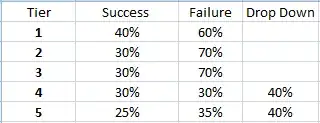This might be a little unusual, but please bear with me. I'm working on a theoretical exercise in chromatography (chemistry), a method that is used to separate different molecules. It is assumed that after performing the chromatography procedure, two different molecules separate from each other along a one-dimensional "tube" in zones that have Gaussian (normally distributed) shapes, with the y-axis representing the concentrations of the molecules along a one-dimensional space. The maxima of the peaks that represent the two molecules are separated from each other by a large number of standard deviations (10 in the following example):
I want to calculate the theoretical amount (cumulative probability) of molecule A in the space that corresponds to the maximum of molecule B's peak. Thus, I am trying to calculate the cumulative density of a standardized normal distribution to the right of an extremely high (>10) z-score. I have tried using R (and Matlab) to calculate this:
1-pnorm(x)
where x is the large z-score. I can increase x=8, which returns the cumulative density of 6.661338e-16. Anything above x=8 that returns 0. I know that it is probably related to memory limitations and rounding off. My question, is there a way (configuration of R or Matlab, specialized software, an existing table) that will allow me to calculate the cumulative density of a standardized normal distribution to the right of z-scores approaching 40, without rounding the answer to 0?
